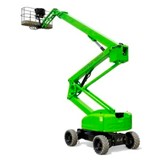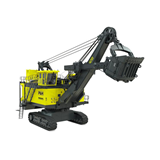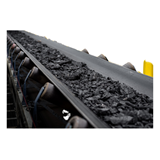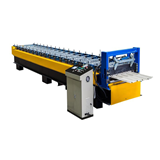The results of the 40 mining companies, representing over 80 per cent of the total global industry by market capitalisation, were included in analysis for ‘mine - let the good times roll’, the third annual review of the global mining industry by PricewaterhouseCoopers.
Tim Goldsmith, Australian mining leader at PricewaterhouseCoopers said, "Investor confidence in the mining industry and its prospects have continued to strengthen. Over the last two years mining stocks have outperformed the S&P 500 and the Dow Jones Industrial Average by over 300 per cent. The question on everyone’s mind is how long this can last, but early indications suggest the results in 2006 will be even stronger.”
Financial highlights for the global companies analysed include:
- The industry’s market capitalisation increased by 72 per cent to US$791bn.
- Revenue increased by 25 per cent to US$222bn
- Net profit margin improved to 20 per cent from 16 per cent in 2004
- Net cash inflow from operations increased by 34 per cent to US$58bn
- Capital expenditure increased from US$24bn to US$31bn
- Exploration expenditure increased from US$1.7bn to US$2.2bn
- Gearing dropped to just 16 per cent with year-end cash balances totalling US$32bn
- Return on equity was up from less than seven per cent in 2002 to 25 per cent in 2005
Commodity price increases, particularly in iron ore, coal, copper and gold are the main drivers of this outstanding performance. With the notable exception of iron ore, aggregate production did not change significantly for most commodities. The improvement in profitability masks a 16 per cent increase in operating costs, reflecting continued pressure on many input costs and a strong focus across the industry on maximising production.
Goldsmith said, "Costs certainly need to be monitored. Australian companies are typically well run, disciplined organisations - hence we’re starting to see efficiency and productivity studies, to understand which costs will remain high if commodity prices fall."
With many companies working hard to expand output to take advantage of the buoyant market conditions, 2005 saw a 31 per cent increase in capital expenditure and 29 per cent increase in exploration. Although it continues to hold on to second spot, Australia’s share of the worldwide exploration budgets continued its five year decline.
The spectacular 2005 global results have enabled companies to increase the amount returned to shareholders to US$16bn in 2005 with further distributions and buy-backs announced in the early part of 2006. However, gearing fell from 22 per cent in 2004, to 16 per cent in 2005.
Goldsmith, said, "Unless the industry is able to identify attractive new developments or acquisition opportunities, investor pressure will mount for increased payments to shareholders.”
2005 saw Australian miner, BHP Billiton, consolidate its position as the world's largest mining company while Rio Tinto still holds onto number two spot.
Goldsmith said, "Australia is at the forefront of the global mining boom and 2005 was an exceptional year by any performance measure. Interestingly, when it comes to net profit margins, return on equity, and return on capital employed, Australian miners delivered less than the global aggregate.”
The Minerals Council of Australia 2005 Minerals Industry Survey, showed that aggregate net profit margins for Australian mining companies sat at 12 per cent, which is some way behind the global aggregate of 20 per cent shown in 'mine - let the good times roll’. Australian return on equity was 14 per cent, while globally it was 25 per cent.
Goldsmith said, "This is a highly complex global industry and there is no single reason for this slight lag. The impediments in infrastructure and lack of skilled workforces are undoubtedly having an impact.”
The report discusses the future outlook for the industry following interviews with selected CEOs of companies throughout the world involved in various aspects of the mining industry. These findings indicate that whilst the 2006 outlook remains strong, the industry believes it is faced with a number of significant challenges, particularly in delivering new projects on time and to budget.
Goldsmith concluded, "CEO’s are cautious about the impact of investment funds, investing directly in commodities. They have assisted the increase in commodity prices, but are expected to be ruthless in bailing out when they see better opportunities and this will have a far greater impact on commodity prices than the industry has been used to. The recent volatility in prices could be a sign of things to come.”
- Suppliers
- New to IndustrySearch? Book a Demo
- Advertise with us
- Login
- Email Marketing
- Buyers
- Get Quotes
- Articles & Ideas
- Login
- Subscribe to newsletter
- My Details
- Get Quotes
- Automation & Control
- Automotive Workshop Equipment
- Commercial Cleaning Equipment & Supplies
- Construction Equipment & Heavy Machinery
- Conveyor Systems & Components
- Electrical & Power Generation Equipment
- Electronic Components
- Farming & Agriculture
- Food & Beverage Processing
- Forklifts & Forklift Attachments
- Hydraulic & Pneumatic Equipment
- Industrial Materials, Tools & Components
- Industrial Pumps
- IT Hardware & Industrial Computing
- IT Software & Applications
- Laboratory Equipment & Instruments
- Manufacturing & Industrial Equipment
- Material Handling & Lifting Equipment
- Metalworking & Machining
- Mining Equipment & Machinery
- Packaging & Labelling Machinery
- Pallet Handling Equipment
- Personal Protective Equipment
- Security & Surveillance
- Test & Measurement
- Transport & Logistic Equipment
- Warehouse Storage, Shelving & Racking
- Waste Treatment & Environmental Management
- Welding Machines & Accessories
- Woodworking & Joinery Machines
- Workplace Equipment
- Workplace Safety Equipment
- Get Quotes
- Automation & Control
- Automotive Workshop Equipment
- Commercial Cleaning Equipment & Supplies
- Construction Equipment & Heavy Machinery
- Conveyor Systems & Components
- Electrical & Power Generation Equipment
- Electronic Components
- Farming & Agriculture
- Food & Beverage Processing
- Forklifts & Forklift Attachments
- Hydraulic & Pneumatic Equipment
- Industrial Materials, Tools & Components
- Industrial Pumps
- IT Hardware & Industrial Computing
- IT Software & Applications
- Laboratory Equipment & Instruments
- Manufacturing & Industrial Equipment
- Material Handling & Lifting Equipment
- Metalworking & Machining
- Mining Equipment & Machinery
- Packaging & Labelling Machinery
- Pallet Handling Equipment
- Personal Protective Equipment
- Security & Surveillance
- Test & Measurement
- Transport & Logistic Equipment
- Warehouse Storage, Shelving & Racking
- Waste Treatment & Environmental Management
- Welding Machines & Accessories
- Woodworking & Joinery Machines
- Workplace Equipment
- Workplace Safety Equipment
Trusted by 1,000,000+ Australian industrial buyers
Buyers
- Discover products & solutions
- Login
- Subscribe To Newsletter
- Browse All Products
- Read Articles
Suppliers
Advertise
- Promote your products & solutions
- New to IndustrySearch? Book a Demo
- Login / Forgot Password
- Advertise Your Products
- Success Stories
- Email Marketing
- Suppliers
- Advertise with us
- Login
- Email Marketing
- Buyers
- Get Quotes
- Articles & Ideas
- Login
- Subscribe to newsletter
- My Details
Get Quotes
- Automation & Control
- Automotive Workshop Equipment
- Commercial Cleaning Equipment & Supplies
- Construction Equipment & Heavy Machinery
- Conveyor Systems & Components
- Electrical & Power Generation Equipment
- Electronic Components
- Farming & Agriculture
- Food & Beverage Processing
- Forklifts & Forklift Attachments
- Hydraulic & Pneumatic Equipment
- Industrial Materials, Tools & Components
- Industrial Pumps
- IT Hardware & Industrial Computing
- IT Software & Applications
- Laboratory Equipment & Instruments
- Manufacturing & Industrial Equipment
- Material Handling & Lifting Equipment
- Metalworking & Machining
- Mining Equipment & Machinery
- Packaging & Labelling Machinery
- Pallet Handling Equipment
- Personal Protective Equipment
- Security & Surveillance
- Test & Measurement
- Transport & Logistic Equipment
- Warehouse Storage, Shelving & Racking
- Waste Treatment & Environmental Management
- Welding Machines & Accessories
- Woodworking & Joinery Machines
- Workplace Equipment
- Workplace Safety Equipment
Get Quotes
- Automation & Control
- Automotive Workshop Equipment
- Commercial Cleaning Equipment & Supplies
- Construction Equipment & Heavy Machinery
- Conveyor Systems & Components
- Electrical & Power Generation Equipment
- Electronic Components
- Farming & Agriculture
- Food & Beverage Processing
- Forklifts & Forklift Attachments
- Hydraulic & Pneumatic Equipment
- Industrial Materials, Tools & Components
- Industrial Pumps
- IT Hardware & Industrial Computing
- IT Software & Applications
- Laboratory Equipment & Instruments
- Manufacturing & Industrial Equipment
- Material Handling & Lifting Equipment
- Metalworking & Machining
- Mining Equipment & Machinery
- Packaging & Labelling Machinery
- Pallet Handling Equipment
- Personal Protective Equipment
- Security & Surveillance
- Test & Measurement
- Transport & Logistic Equipment
- Warehouse Storage, Shelving & Racking
- Waste Treatment & Environmental Management
- Welding Machines & Accessories
- Woodworking & Joinery Machines
- Workplace Equipment
- Workplace Safety Equipment
Trusted by 1,000,000+ Australian industrial buyers










